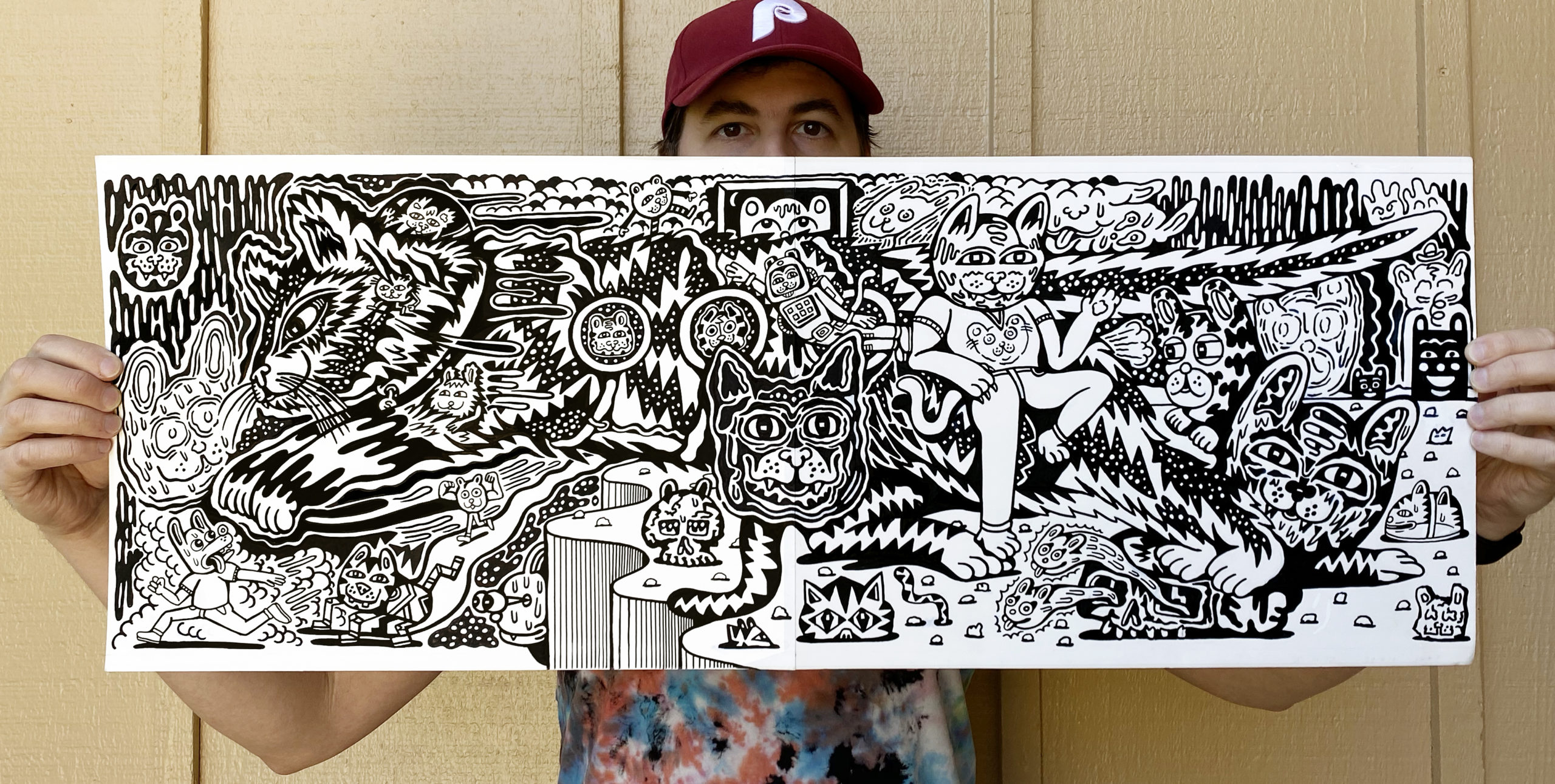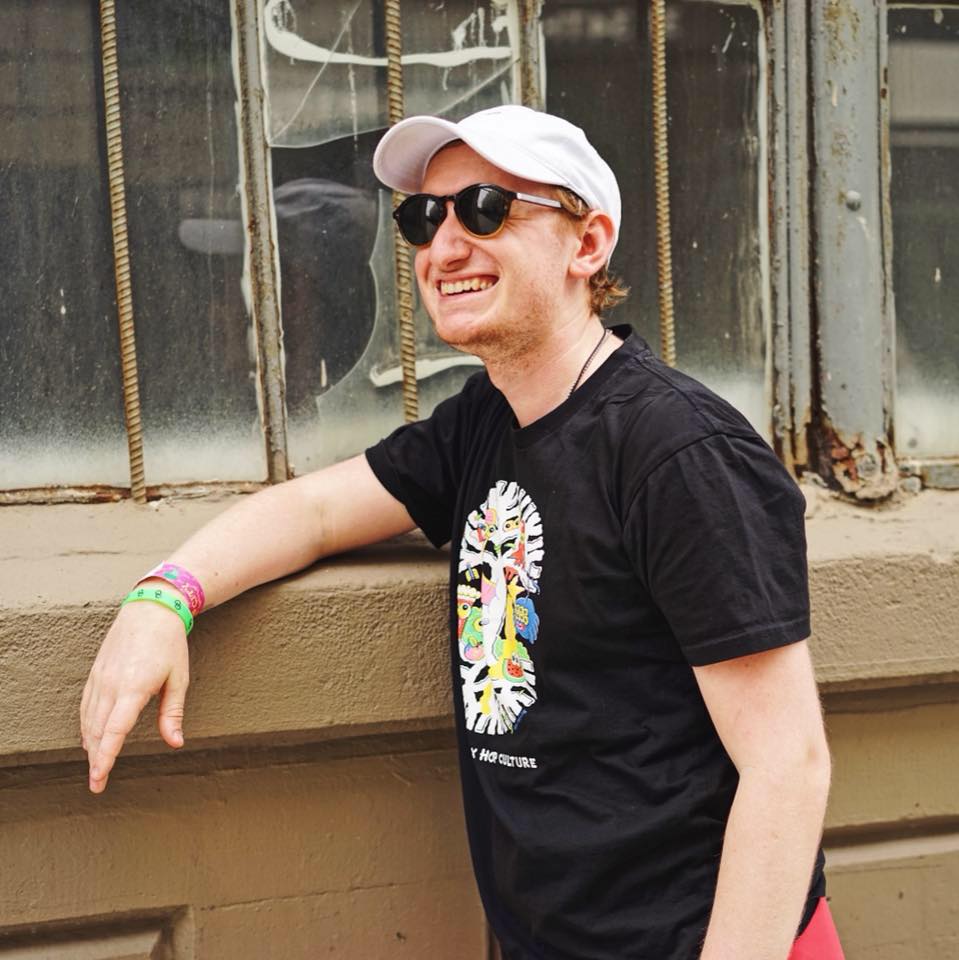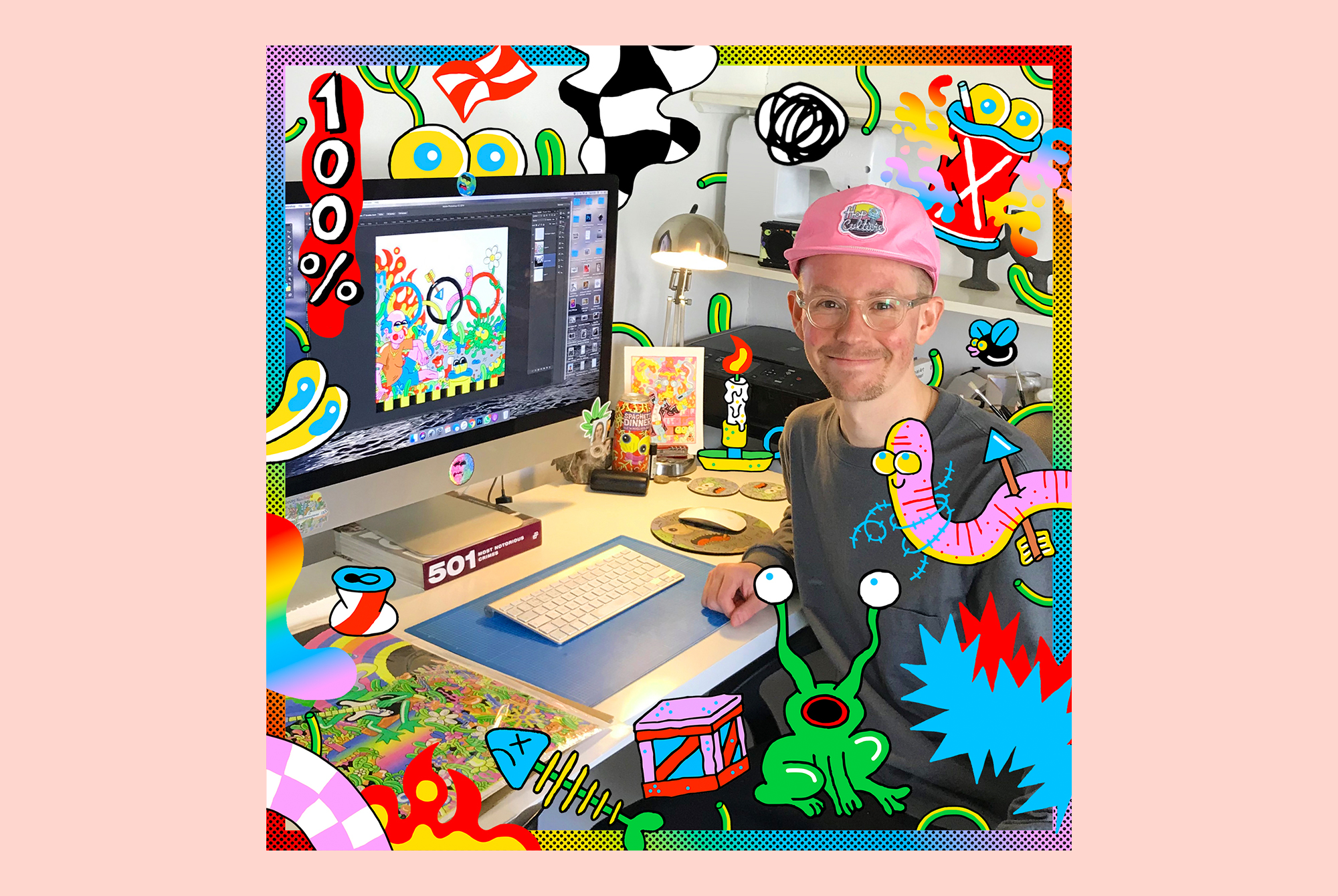Shop
An Interview with Rob Corradetti AKA Killer Acid
A sneak peek into the mind of Killer Acid.
Although Killer Acid is a brutal name, California-based artist Rob Corradetti is as reflective and introspective as they come. Corradetti, who started going by Killer Acid around 2010, moved to the West Coast after living and working in New York City for years.
Though his work may seem loud, irreverent, and covered in a haze of pot smoke, it’s often personal; art has become a salient way for Corradetti to approach conversations around mental health.
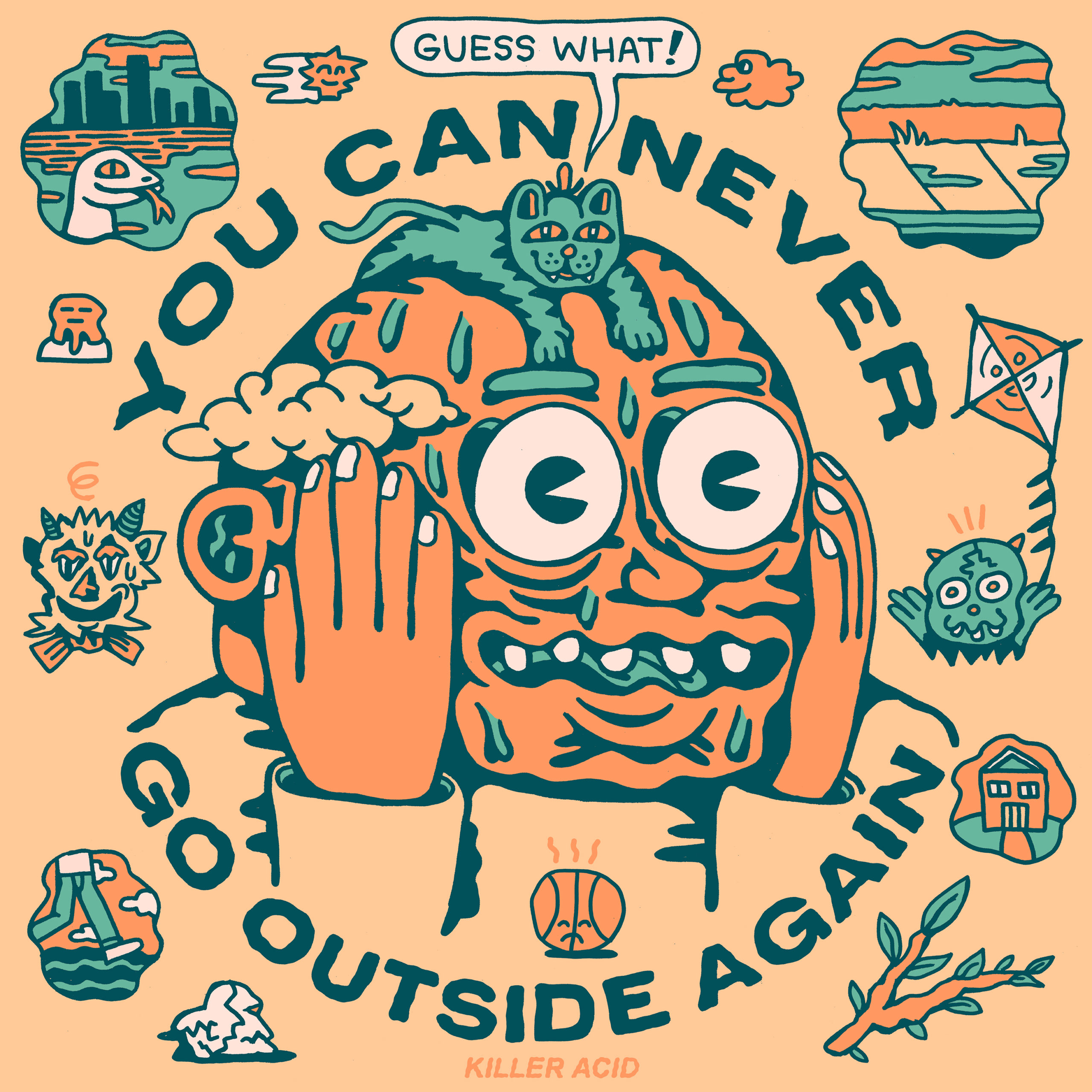
While he takes inspiration from the lowbrow, Psychadelic, and surreal art movements, Corradetti’s work feels all his own. It’s trippy and aggressive but always laced with humor, whimsy, and a sense of discovery.
Initially, we asked Corradetti to work with us on a unique piece of glassware. At first, we thought it was a shot in the dark. Corradetti has worked with Adult Swim, Zumiez, VICE magazine, and more. He’s produced art for musicians like Kurt Vile, Mac Demarco, Ty Segall, and Phish. Would he want to work with an independent craft beer magazine?
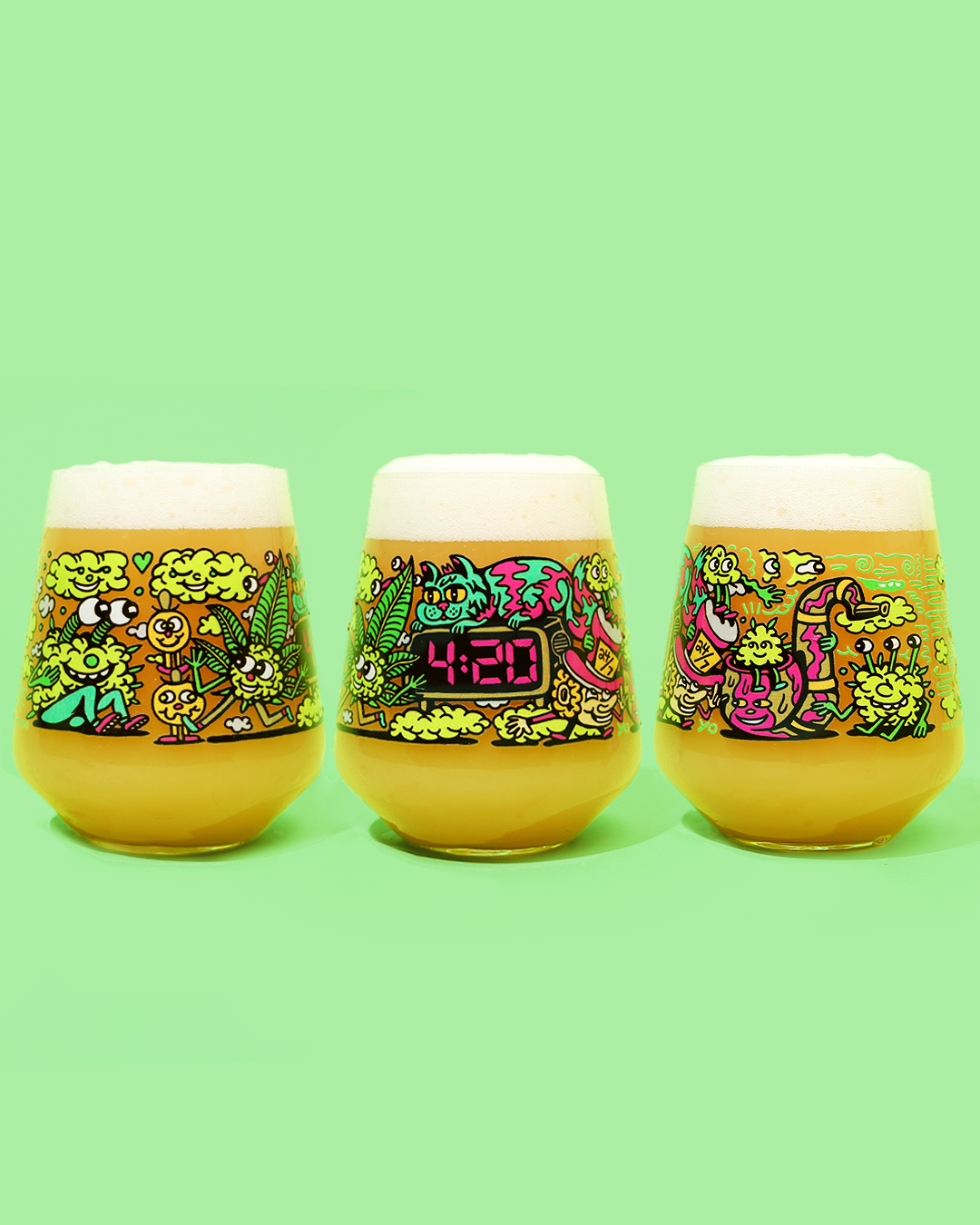
Turns out, he would. In fact, that first collaboration has spawned many more projects with Corradetti, including the posters and custom glassware for nearly every West Coast event Hop Culture hosts. He’s even illustrated a few of our collaboration beers with breweries like Drake’s and Brouwerij West. As a result, he’s become a constant fixture at our festivals, setting up his stand next to the Hop Culture merch table.
At our festivals, I’m typically the one running our merch. So over the last few years, Rob and I have had plenty of chances to get to know each other and chat about music and art. And we’ve even been able to turn him into a burgeoning craft beer fan!
I decided to catch up with Corradetti digitally to learn a little bit more about his background, his influences, and how he developed his artistic style.
An Interview with Killer Acid
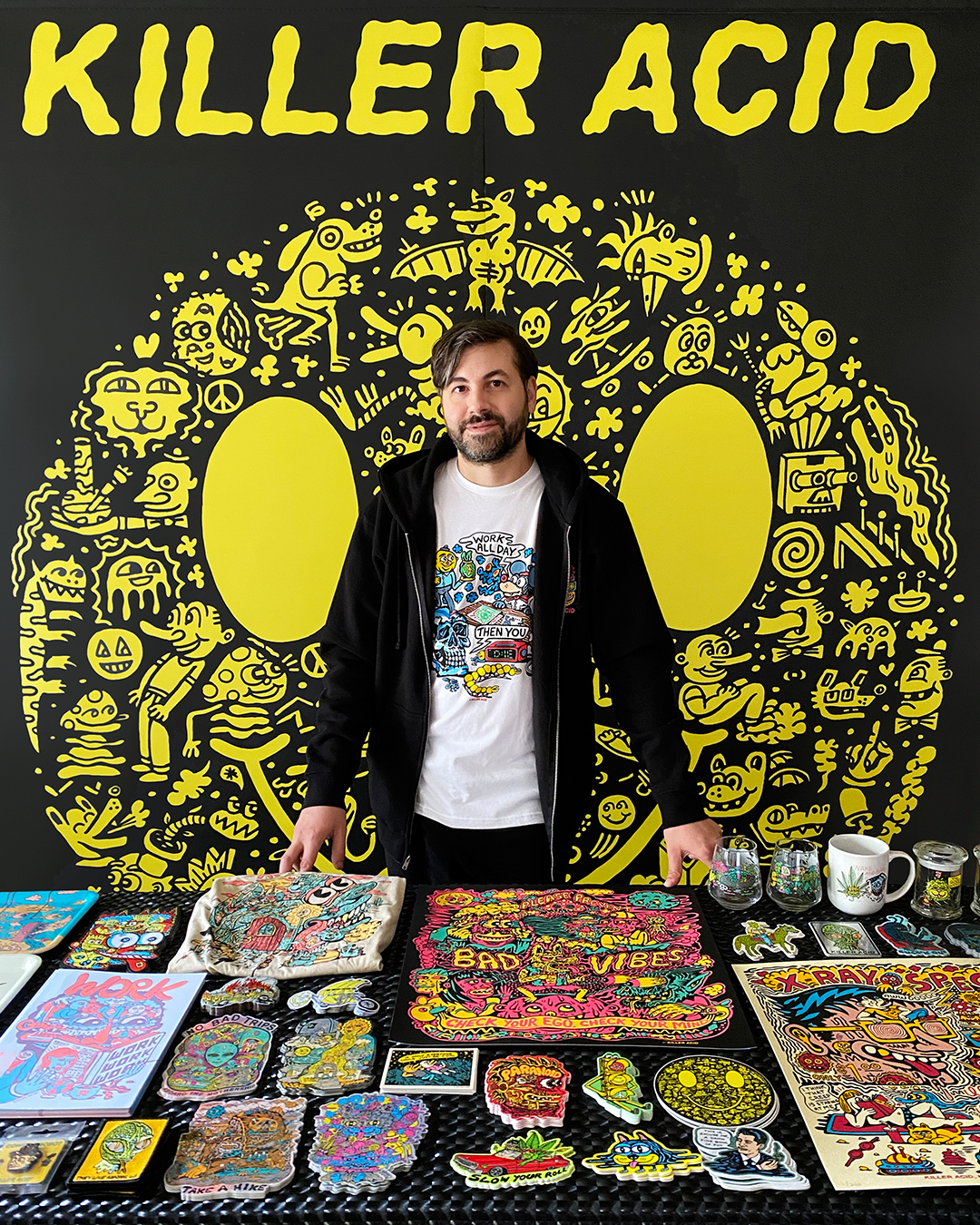
John A. Paradiso: Where did you grow up? Can you remember when you originally became interested in art?
Rob Corradetti: I grew up in Delaware in the 1980s — not exactly a hub of art and culture. My father was a Spanish teacher so we had a bunch of art books in the house. When I was nine or ten I was obsessed with Picasso. I had an easel and painted with oil paints in an unventilated basement. Sniffing fumes by accident I think got me a little transported.
In high school, I fell in with an artsy, mind-expansive crowd. Those guys encouraged me to make drawings and write songs. When I was sixteen, I started drawing psychedelic cartoons. I have a notebook from 1995 where this adventure clearly begins. I was super familiar with the work of R. Crumb and Stanley Mouse through album covers, but I didn’t know who they were. Same with Gary Panter and Wayne White. I watched Pee Wee’s Playhouse religiously, but had no concept who the artistic minds behind it were. I had a beat-up copy of The Grateful Dead’s Aoxomoxoa. That album cover sucked me in. So I think I had a lot of information about 60s art, but thankfully didn’t know too much.
JP: How much did your environment influence your decision to become an artist?
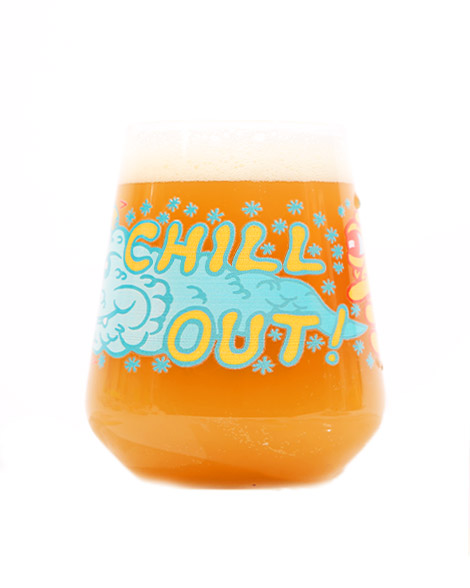
RC: I think if you are raised with someone telling you “this is important because of ‘X’ or that is special because of ‘Y’,” you don’t really get to see everything on a level playing field. Maybe by circumstance, or a little by choice, I was afforded a prolonged period of childhood innocence. I feel like that shows up in my artwork a lot. I’m always trying to get back to that place where space feels boundless and you don’t have a place to be.
JP: And when did art become a full-time career for you?
RC: I distinctly remember the last job I did before making the jump to working 100 percent for myself. I was helping to rebrand packaging for a popular potato chip company. I was in charge of photo-compositing the piles of chips. It was like twenty varieties of chips, each one compiled from about thirty different shots. I was looking at them all in a super zoomed-in, granular way, taking a rind of a chip from one select, then finding a decent hero chip from another.
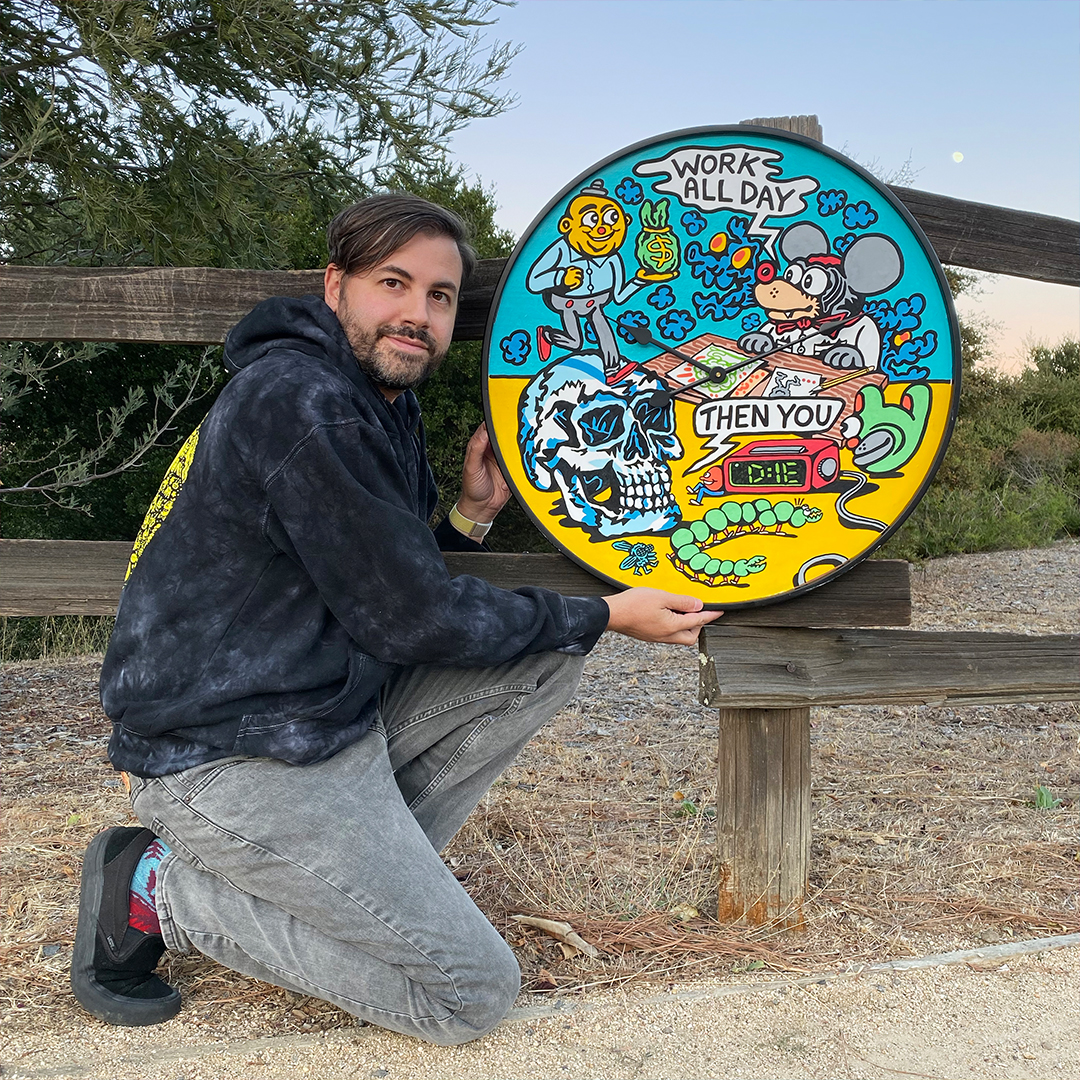
During that job, I had a cool article posted on Juxtapoz and I also had gotten my first collab with a legit streetwear brand. So instead of being mad about all the chips, I embraced them. I never worked so hard, pushed myself into so many piles of greasy fried potato and veggie crisps, because I kind of knew after this there’d be no going back. The chips were safe, but the future was a mystery.
To this day, I can’t get on a Jetblue flight without seeing those chips. They’re still using the artwork, five or six years later. One time, three Bloody Mary’s deep, the stewardess put the snack tray under my nose, and I plucked those chips from the top. Exaggerating slightly, I said to her, ‘You know, I designed this bag.’ She looked at me, half understanding, and said, ‘Wooooww!’
JP: When and why did you start going by Killer Acid?
RC: Killer Acid was a phrase in a song by my old band. It had a nice ring to it and made sense for the project I wanted to start when I was at a creative crossroads back in 2010. Killer Acid has morphed more into a brand name over the years. I never correct people when they use it as my art name. It’s just kind of whatever people want it to be at this point. I encourage confusion and ambiguity as part of our core message.
JP: I know you moved out West after being on the East Coast for a while. What prompted that move?
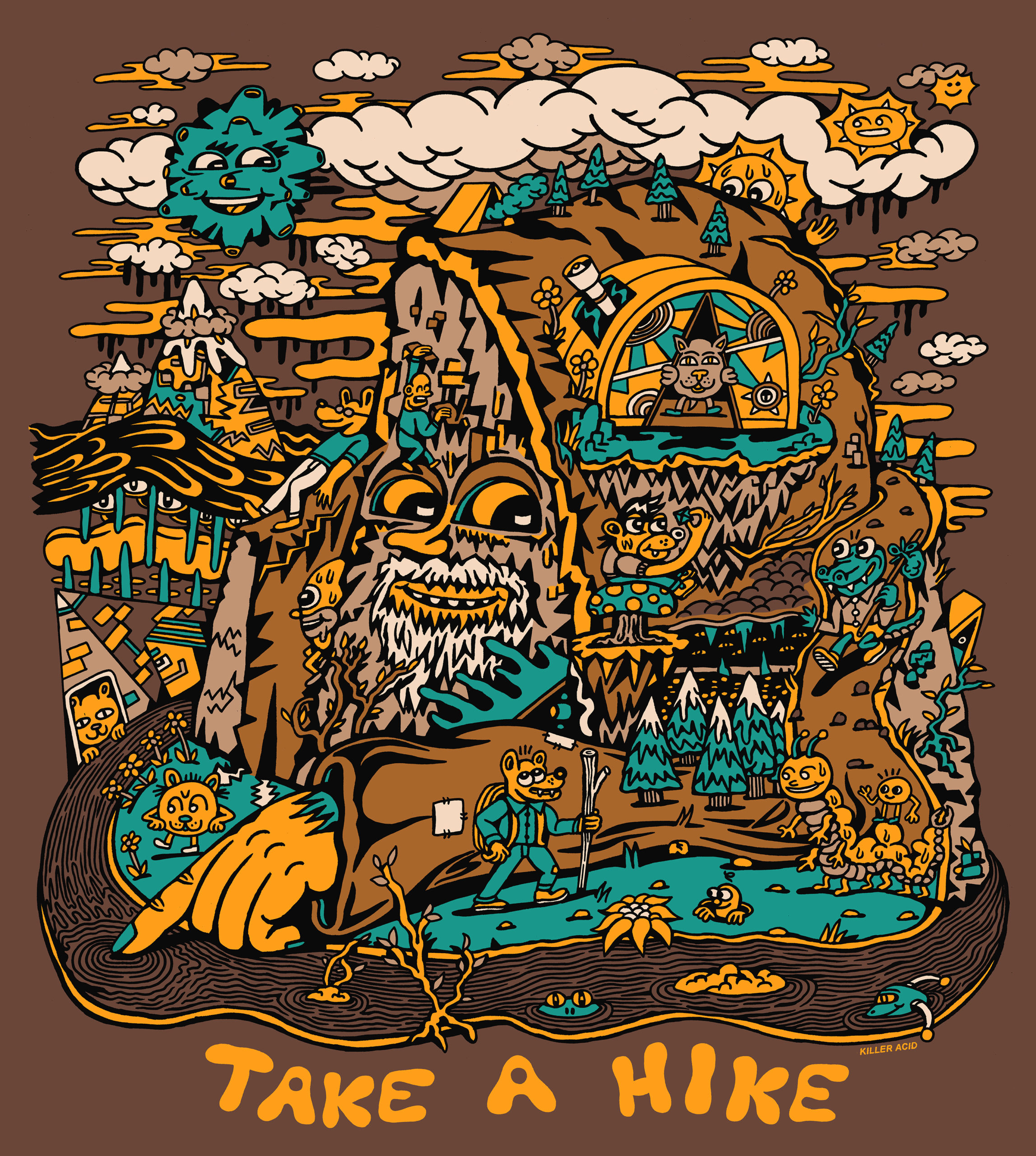
RC: I’d lived in San Francisco for a few summers when I was a teenager so I always dreamed of coming back. Surprise! It’s so disgustingly expensive and dystopian in Silicon Valley. I guess you can see it on the news. It’s just like the Phillip K Dick books I read back then. I feel like I’m living in one of them. Being here has somehow simultaneously made me angrier, but also more zen. I think the two extreme sides of my personality have come out. Laid back, fun-loving, fuck-it vs. serious and hell-bent on creating something.
JP: Did that change of scenery have any effect on your work?
RC: It’s just that the backdrop is way more mellow than New York so I feel like my anxiety has no place to be. Hiking helps. I saw a therapist for a year. I missed my family and friends and didn’t know too many people here. And I think the question about moving to California is supposed to be a happy story. And it is! Or I think it’s starting to become that. But it’s also weird as hell. I feel like maybe I’ve doubled down on everything.
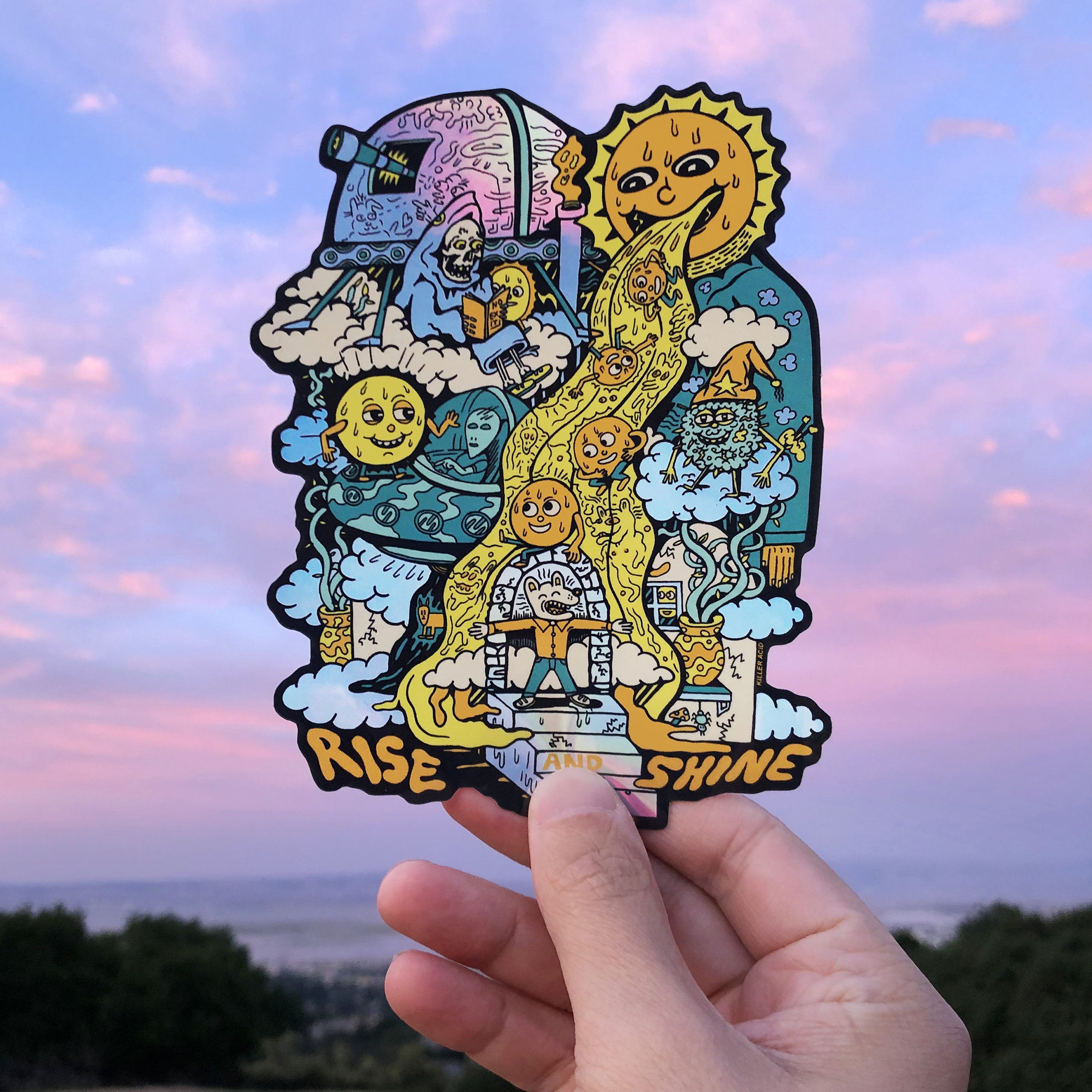
When I wasn’t traveling for events, I was holed up in my home working on stuff. The energy is good here, but sometimes it feels like you’re trapped in amber. In New York, the energy felt crisp. I started working with Santa Cruz Skateboards and some other West Coast breweries so I anticipate moving down that way in a few months and opening a proper studio space, or possibly the first Killer Acid store (finally) though who the hell wants to run a store. It would have to be a fun little crammed heady spot that can fit about three and a half people, including me and the cashier.
JP: How would you describe your art?
RC: Some people call it lowbrow, but to me that’s weird because I think of lowbrow as being a specific art movement. I think of Big Daddy Roth, hotrods, and roided out rodents. I feel like lowbrow is meant to shock the viewer by being overly blunt, exaggerated, or grotesque.
Don’t get me wrong, I’m a huge fan and follower of all that stuff. I appreciate that vibe, but the work I’m most proud of is more personal and deals with psychology or mental illness in some way. I’ll always throw in a quick pot doodle or two to amuse myself, but that’s low-hanging fruit. Really, my favorite pieces are the big ones that take a while to form, and come from a quieter place deeper down.
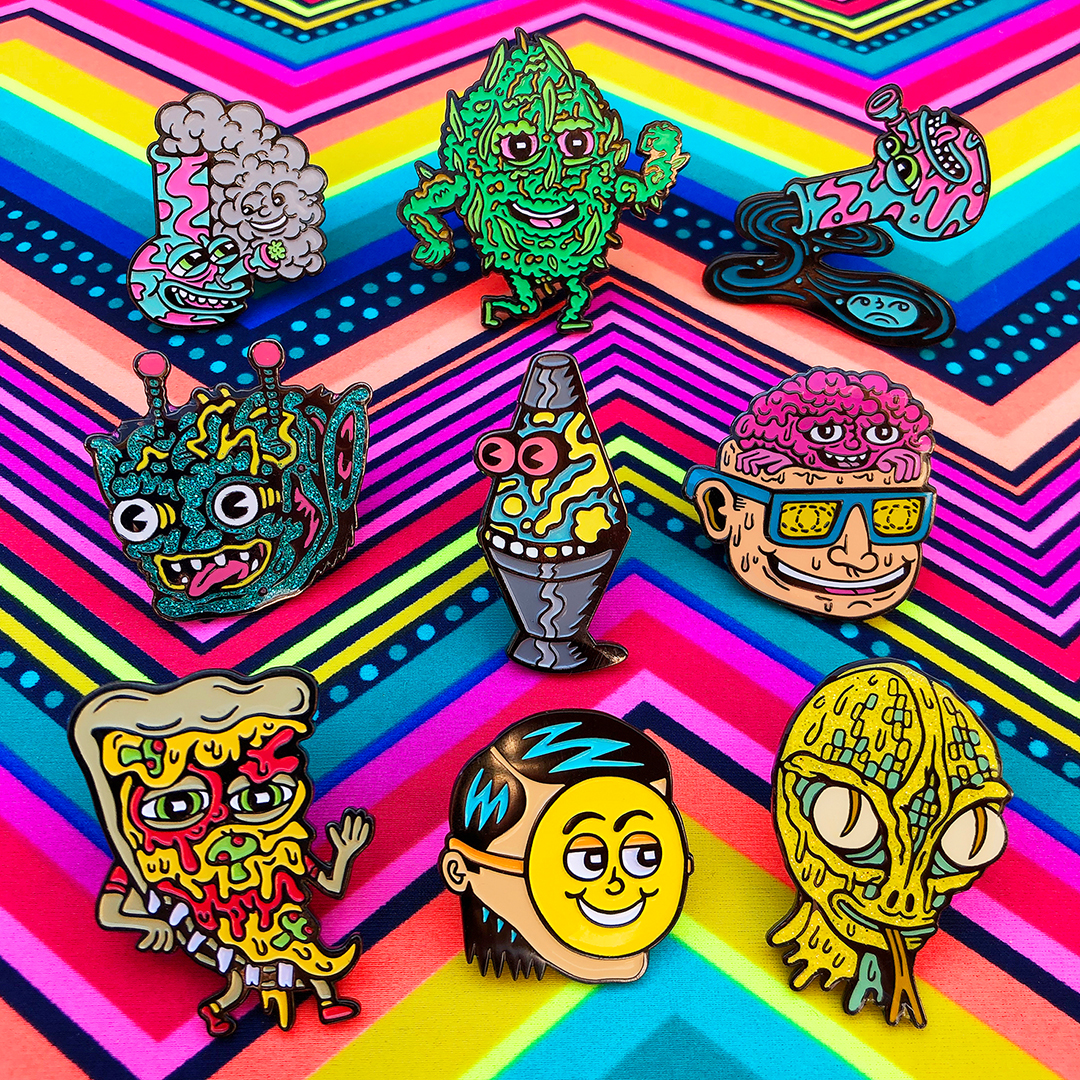
The term psychedelic is thrown around a lot. That word has been applied to so many types of art, music, and experience that it has almost lost its meaning. Psychedelic is derived from Ancient Greek and means “mind-manifesting.” When things are feeling good, I sit down and the thing I’ve been mulling over just plops out of my mind, down my hand, and onto the paper in a kind of trance.
That’s not to say I don’t know what I’m aiming to make, but I’m feeling like a conduit for the drawing to come out. I think of my mind as a mirror. The image is already on the other side. I have to reach in and pluck it out.
Sounds pretty psychedelic, I guess.
JP: Yeah, it definitely does.
RC: People say, is it drugs? Well, yeah you maybe learn to zone out and draw on certain drugs. It’s a wonderful feeling. I remember looking at the thing later and thinking what the hell is that. At the time, it felt alive. The paper is breathing. But now in the sobriety of morning it just looks like some kind of alien scribble language.
So you need to learn control and visual communication. You need to bring objects in, and to learn how to navigate symbols and concepts emotionally. But it really is years of practice, and you don’t need drugs to go to that weird place. It’s like you kind of live there all the time, and the rest of reality is what gets in the way.
JP: Who is an artist you admire?
RC: I was lucky to study in Paris on an exchange program when I was twenty. Jean Cocteau was my first true love. He made everything: drawings, frescos, plays, films, sculptures, you name it. I think because of him I always want to try to make something new. And I think that’s a valuable lesson. I see a lot of artists get popular for making a thing, so they just keep making that same thing forever. So I think it’s way cooler to try something new, even if you fail.
JP: Do you have any favorite projects you’ve worked on?
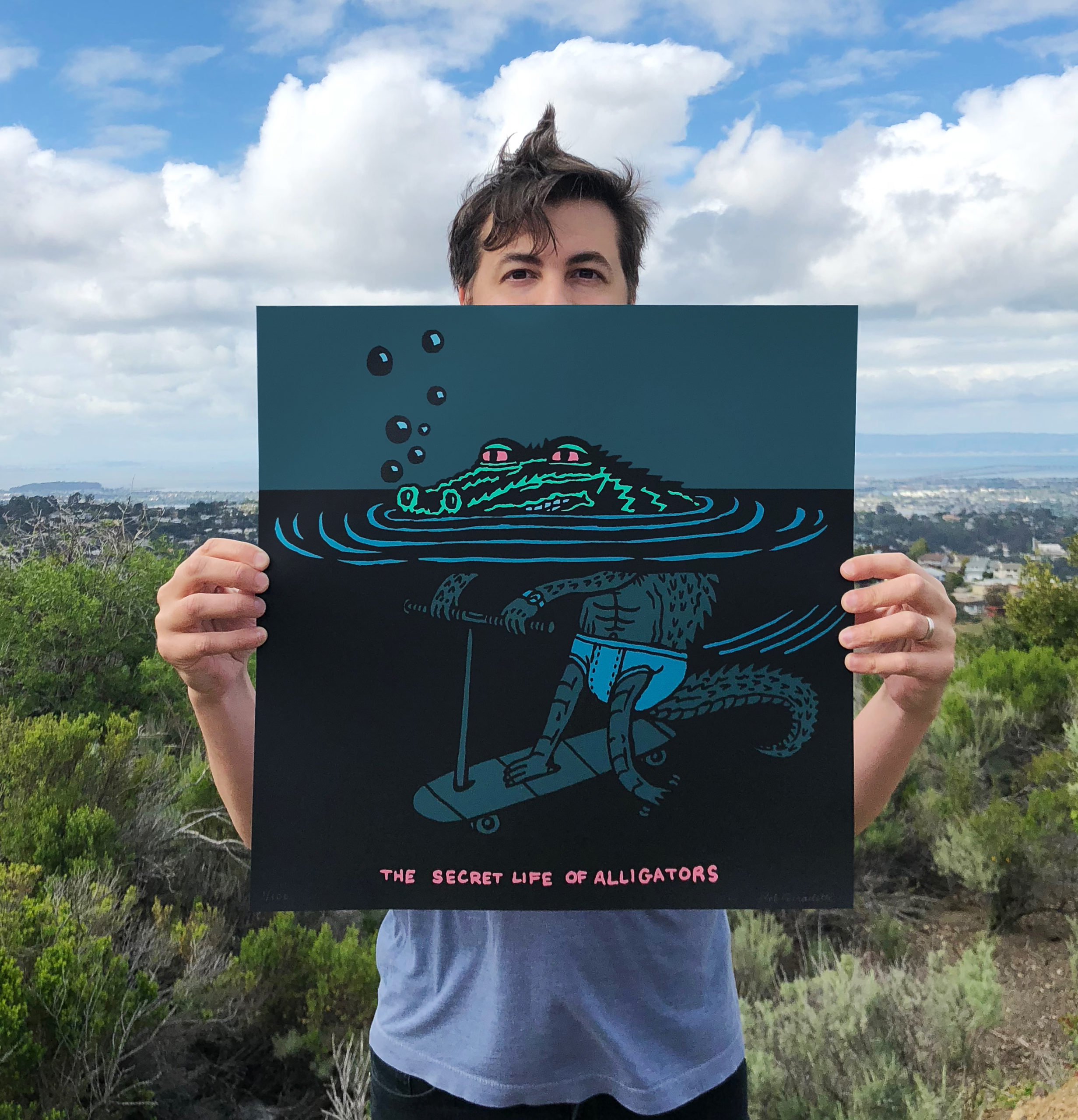
RC: I’ve gotten to do all sorts of crazy things over the years. I’m always looking to figure out a way to get art onto all kinds of surfaces and objects. Learning about print processes excites me. I think the favorite project I’ve done is coming out this June. It’s a big secret.
JP: We reached out to you a year or two ago to work on a glass design. Why did you take the job?
RC: I thought Hop Culture made beer look really exciting. Those were some of my first drink-related projects. I’ve gained a ton of respect for independent breweries and working with Hop Culture I feel lucky that I’ve had so many behind the scenes tours.
JP: And what’s your favorite Hop Culture artwork you’ve done?
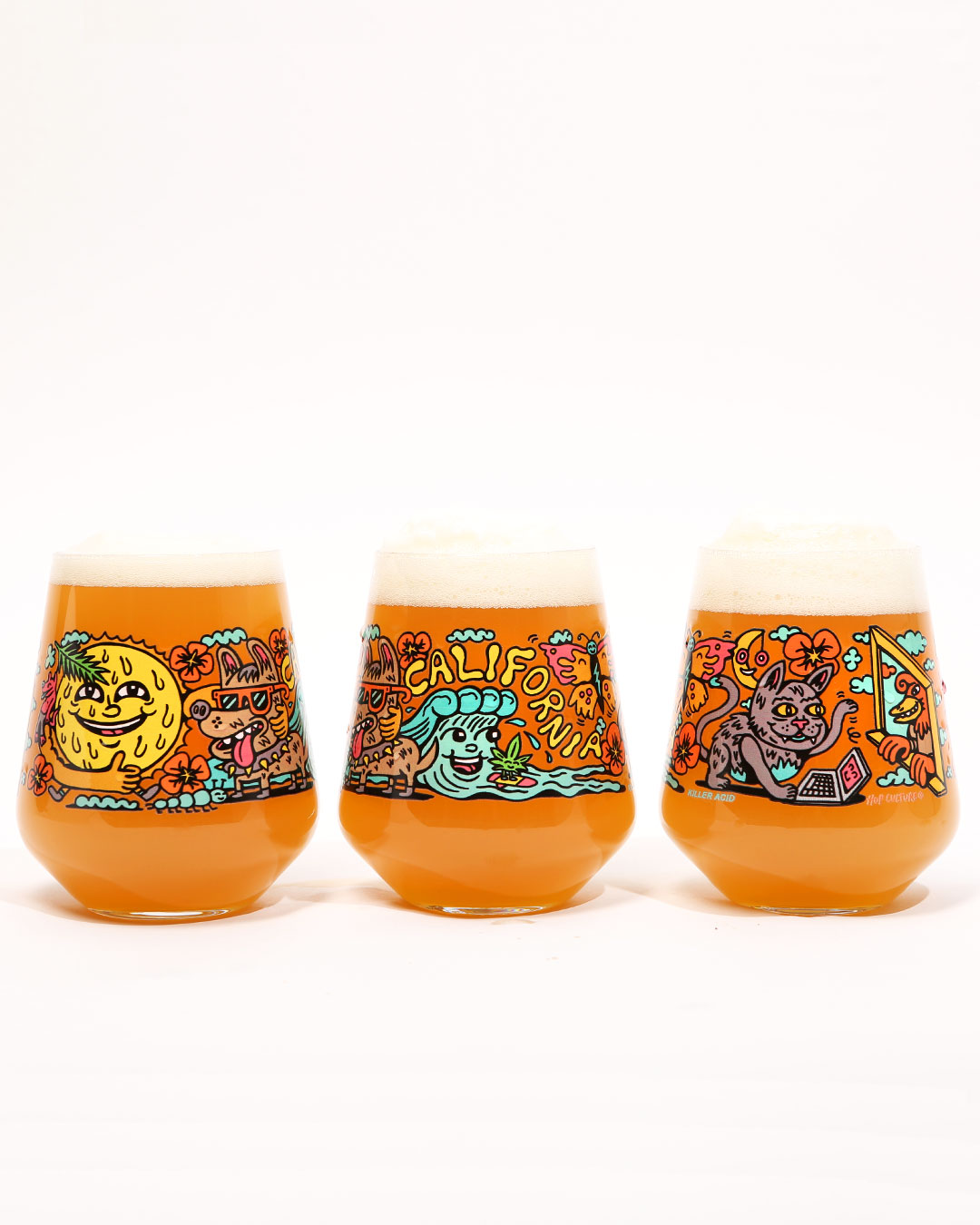
RC: My favorite was probably the California glass that was originally for a fest in SoCal. I love making the wrap-around glasses in general. It’s such a throwback to the 80s novelty style glasses. You can cram a lot of fun stuff into a small space.
JP: Has working with us made you any more interested in craft beer?
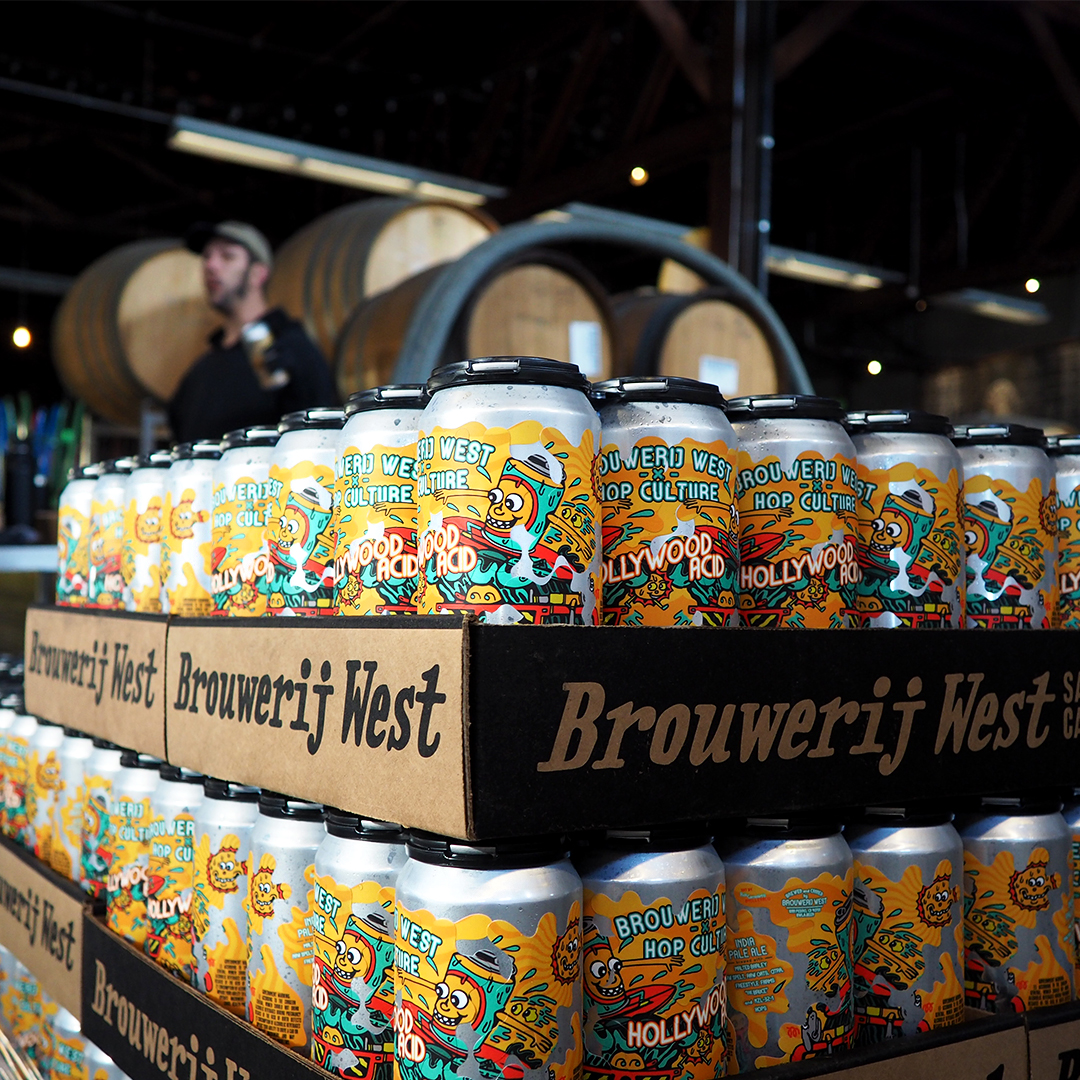
RC: You’ve introduced me to some awesome breweries like Humble Sea, Brouwerij West, and Drake’s. I’m more than happy to sit back and enjoy all the delicious samples.
Liked this article? Sign up for our newsletter to get the best craft beer writing on the web delivered straight to your inbox.

